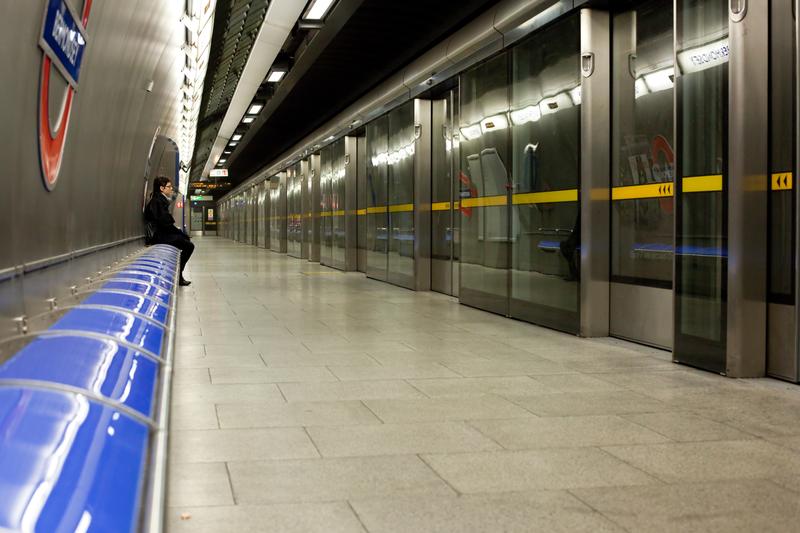 Transportation Nation
Transportation Nation
Subway Platform Barriers Not Easy to Come By

Every time New Yorkers hear of a death on the subway tracks, shivers run down our spines. The fact that it's a relatively infrequent occurrence doesn't mute the horror— especially when the victim was pushed to their death in front of an oncoming train.
"Any customer who uses the system says, "It could have been me,'" said MTA chairman Tom Prendergast on Wednesday, referring to the fatal Sunday incident where a man was pushed in front of a D train. "We're exploring ways in which we can try to limit the potential for that happening. And if there's way to do it technologically, we will."
Here are the two possibilities on the table:
Sliding Doors. Last month, MTA-commissioned engineers began designing a platform door system to test at a station yet to be determined. "We had previously thought it would be the L line," said MTA spokesman Adam Lisberg, "but we're not limiting that, just in case (the engineers) see a better idea somewhere else." (The L line has the advantage of not sharing tracks with another line, and it runs only one type of subway car, so the door locations are a constant.) Lisberg said the designs should be completed next year, but there's no installation schedule yet.
If the sliding doors pilot is successful at that station, the MTA will then face the challenge of installing it elsewhere. And in a 110-year-old system with 468 different stations and 10 different types of subway cars, that's a lot of retrofitting. "Any new system is built with them," Lisberg said. "Old systems around the world are starting to retrofit. It's costly and complicated, but it's something we need to explore."
"There was a time when 468 stations didn't have electrical outlets or telephone lines," he added. "Change can come, but it takes a while."
Intrusion Detection Technology. The MTA is piloting a system that uses a variety of technologies, like lasers and thermal imaging, to detect when large objects (read: people) enter the tracks. The systems alert dispatchers to the intrusion, who can then slow or stop trains. This system would help if there's a lag time between the time a person enters the tracks and the train pulls in, but in the event of a suicide or murder, it's not nimble.
There's no budget yet for a full-scale installation of either technology, and it's worth noting that the MTA's upcoming capital plan has a $15 billion deficit.
In the meantime, straphangers should abide by the MTA's public service announcements and step away from the edge of the platform.